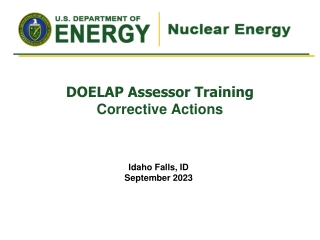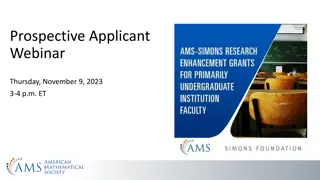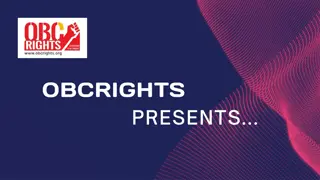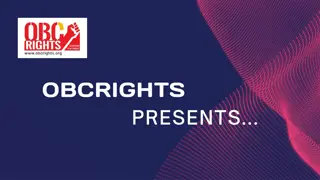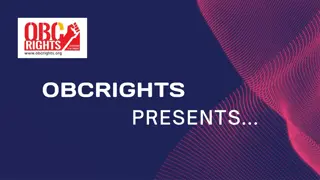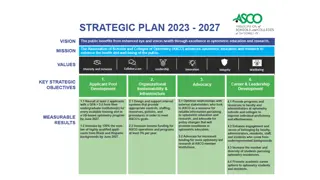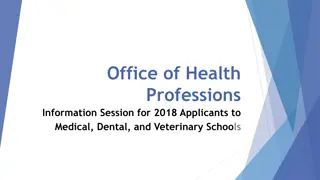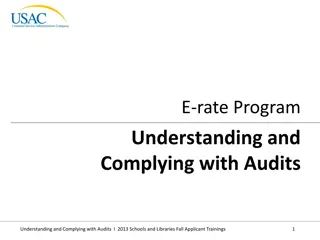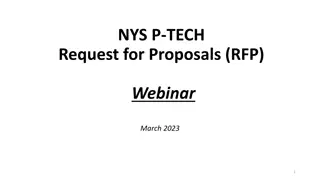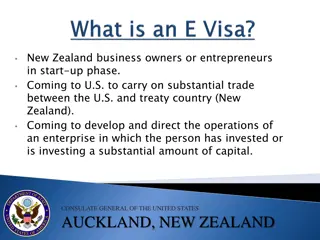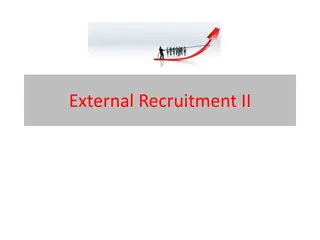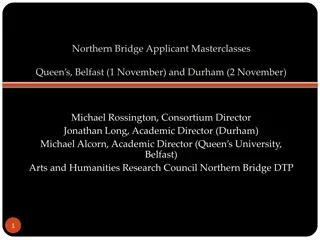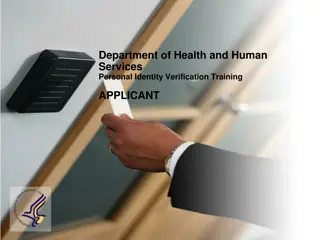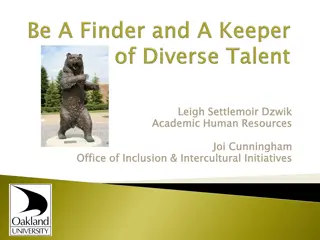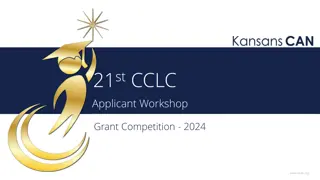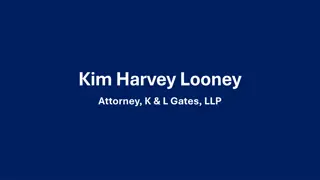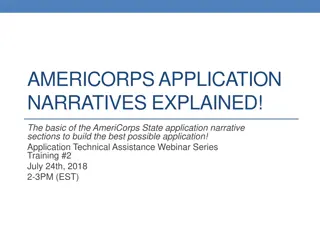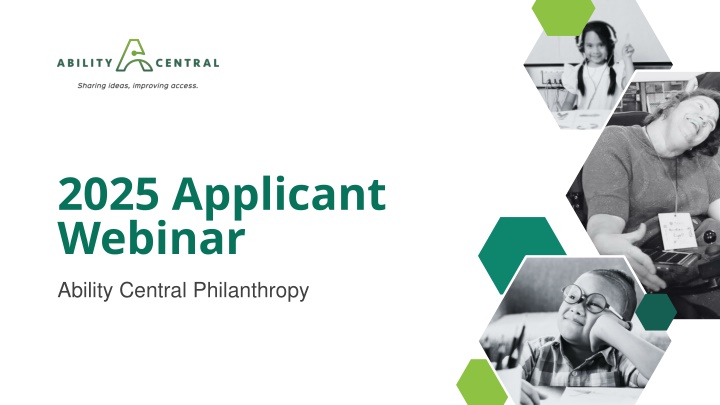
Grant Funding Webinar 2025: Ability Central Philanthropy Overview
Discover the grant funding process and priorities for 2025 by Ability Central, focusing on improving communication and information access for individuals with disabilities. Learn about eligibility, application requirements, and more to secure funding for your organization.
Download Presentation

Please find below an Image/Link to download the presentation.
The content on the website is provided AS IS for your information and personal use only. It may not be sold, licensed, or shared on other websites without obtaining consent from the author. If you encounter any issues during the download, it is possible that the publisher has removed the file from their server.
You are allowed to download the files provided on this website for personal or commercial use, subject to the condition that they are used lawfully. All files are the property of their respective owners.
The content on the website is provided AS IS for your information and personal use only. It may not be sold, licensed, or shared on other websites without obtaining consent from the author.
E N D
Presentation Transcript
2025 Applicant Webinar Ability Central Philanthropy
Housekeeping Please use the Q&A function to ask your questions throughout the presentation There will be a Q&A portion at the end of the presentation If your question is not answered, or you have a more in-depth question, you can follow up via email with the Grant Team at grants@abilitycentral.org.
Agenda Ability Central Mission and Process Overview 2025 Funding Priorities How to log in to the portal and begin the process Eligibility Quiz Application Questions and Example Answers Budget Questions and Budget Template Scoring Criteria Questions
Our Mission Ability Central is committed to improving communication and information access for people who are Deaf, disabled, and neurodivergent experiencing access and functional needs.* We serve as a funder, educator, and convener working collaboratively with our grantee partners, other funders, and the disability community to integrate effective communication solutions. *Examples include blindness, low-vision, people who are Deaf, hard of hearing, Deafblindness, speech disabilities, intellectual and developmental disabilities, ADHD, dyscalculia, and dyslexia, and more.
Grantmaking Process Overview $1 million granted annually (averages to about 15 grant awards per cycle). Grants range from $10,000 $100,000. California-only funding. General operating support up to 25% of request. Only Community-Based Organizations registered as 501(c)3's may apply The annual grant cycle is a two-part application process administered through an online grants management system, beginning with the Eligibility Quiz.
Full Application Process Overview Those that pass the eligibility quiz are required to schedule a Front Porch Applicant Call before completing the application. Applications are due on September 13th, 2024, by 5pm PDT. Applications are reviewed and scored by two staff and a self-advocates advisory group, before top-scoring proposals are decided upon by the board (process is approximately 8 to 10 weeks). Notification of Award will be in mid- to late-November 2024. Once approved, and grant agreements are finalized, funds are disbursed in semi- annual installments of 50% of award amount in December and August.
Login https://www.grantinterface.com/Home/Logon?urlkey=ccaf
Funding Priorities Our 2025 funding cycle for Communication Access projects encourages: Developing and Training Healthcare Professionals Career and Leadership Development All projects should be working toward improved access for people with communication disabilities.
Eligibility Quiz - Criteria For the Project... Appropriate request size Percentage of funds requested for indirect expenses Fits our funding initiatives The purpose is within our funding limitations Identified partners and collaborators Project beneficiaries For the Organization... 501(c)3 status Community-Based Organization Headquartered in California People with disabilities in leadership positions History of serving people with disabilities
Application Questions (1-3/15) 1. Project Name: Please enter the name of your project Example answer: How Can I Help YOU? Disability Cultural Awareness and Competency Training for Employers 2. Funding Initiative Select the funding initiative from the drop-down menu that you are submitting a project proposal for. 3. Request Amount Please enter the amount requested for this project. You may request between $10K-$100k. Request amount is not guaranteed if awarded, and we may adjust the amount based on the score and what we consider reasonable to complete the scope of work.
Application Questions (4/15) Project Purpose: What will the funds be used for? Please start the short paragraph with "Ability Central funds will support name of organization to..." Example answer: Ability Central funds will support the AAC Institute of the East Bay to pilot a three-part video training series led by three paid self-advocate trainers with varying communication disabilities to teach disability awareness and cultural competency to companies that employ people with disabilities.
Application Questions (5/15) Mission, History, Core Programs Please tell us more about your organization's mission, its history, core programs, and any significant accomplishments you'd like to share. Bullet points are encouraged. Example answer: Our mission is to serve people with disabilities that benefit from AAC to communicate. History: We were founded in 2013 by out of the need for and we have continued to grow, successfully and consistently offering three core programs: 1. 2. 3. We have received service awards for the last three consecutive years, trained over 3,000 professionals, and served over 10K people with disabilities in our 10-year history.
Application Questions (6/15) Project Description Please tell us about your project, what it proposes to accomplish, and why your organization is the one to do the work. Bullet points encouraged. Example answer: Our project will improve communication between front-line clinical staff and patients that use AAC. We will pilot a three-part video training series. It will include: 1. Self-advocate patient experience impact stories 2. Strategies and Tools to have on hand to listen and convey information directly to the patients with disabilities 3 . We have ongoing partnerships with two clinics in Alameda County and we ve in the past. We have SME in curriculum development for people with disabilities, and we always include people with disabilities in our planning and implementation, because the leadership of those most impacted is crucial to the success of any project s dissemination.
Application Questions (7/15) Goals, Activities, and Timelines Please provide a response to these questions: 1. What are your primary goals for this project? a. Please describe the strategies and activities you propose to reach these goals within the project period. b. Please indicate the dates when you estimate the major milestones and activity outputs will be reached during the project period. Example answer: The primary goals of the project are 1. 2. 3. To accomplish these goals, we will by XX/XX/2025
Application Questions (8/15) Measuring Impact How will you collect and analyze qualitative and quantitative data to measure your project's impact? Example answer: To measure impact, we will collect and analyze the following data points...
Application Questions (9/15) Estimated number of people with disabilities served. Please estimate the number of people with disabilities that will be served through this project. Example answer: 5,000
Application Questions (10/15) Beneficiaries Who are the beneficiaries of the project? Both direct and indirect? (People with disabilities, family members, care teams, etc.) Example answer: Indirect: People with disabilities. Direct: Family members, care teams, and healthcare professionals.
Application Questions (11/15) Engagement & Knowledge Sharing Please tell me how you plan to reach your target audiences, the beneficiaries, and how you plan to share the results. Note, at least one representative from your project will be required to attend a Grantee Gathering in March of 2025 and March 2026 to present and share highlights and lessons learned on your project with peers and other grantees. Example answer: We plan to utilize our project coordinator s expertise in outreach via direct email requests, our website, social media (Twitter 12,000 followers; Facebook 11,000 followers; Instagram 10,000 followers), and newsletter (8,000 subscribers) to reach our target audiences which are caregivers, healthcare professionals, and family members. Indirectly, we will be serving people with disabilities as the recipients of the improved care. We will share the results on all previously mentioned mediums as well as at the Ability Central Grantee Gatherings and in our annual impact report.
Application Questions (12/15) Partners and Collaborators and Key Bios Please name your organizational partners and potential collaborators for this project. Please indicate if you've worked together previously and if they are pending or confirmed. Additionally, please provide a list of the main project team members with: names, titles, roles in project, subject matter expertise/affiliation, and major accomplishments relevant to the project's purpose Example answer: Confirmed: Kaiser Clinic #1, Kaiser Clinic #2 We have worked with Kaiser in the past (2018-19), having successfully advocated for and guided the implementation of accessible announcements for all patients in the waiting rooms. We utilized self- advocate impact stories to bring awareness to how the current system was not serving folks with communication disabilities well.
Application Questions (13/15) People with Disabilities in Leadership Does your organization have people with disabilities in paid leadership positions? This can include self-advocate advisory group members, staff, and/or Board? Please elaborate. Example Answer: We have a majority of people with disabilities on our Board (60%) including our Board president. We maintain a small staff of five, two of our full-time staff identify as people with disabilities including our Project Director and Coordinator, and we have a self-advocate advisory group that includes six people with various communication disabilities that guide our decision making. All Advisory Group members are paid a stipend of $50/hr for each meeting they attend and $25 for any community surveys we ask them to complete throughout the year.
Application Questions (14/15) Project Budget (use template provided) Please upload a project budget using this TEMPLATE Download the Drive Document as an excel sheet and complete. Then upload the excel sheet as an attachment. Note, at least one representative from your project will be required to attend a Grantee Gathering in March of 2025 and March 2026 to present and share highlights and lessons learned on your project with peers and other grantees. Please include the cost of travel to and from Oakland, CA for both events in your project budget. This is based on average price of flight, hotel, train, parking, uber, etc.
Application Questions (15/15) Profit & Loss Statement Please upload your most recent Profit & Loss Statement & Include any budget notes in the text box. We are looking for your most recent YTD statement that includes your total income, total expenses, and the total profit or loss at the end of the year. This should just be a page or a few pages, but not your entire audited financial statement.
Example Profit & Loss
Scoring Criteria (1/10) Mission (6 points) Clearly stated organization mission. Alignment of the project with the organization s mission. Demonstrates commitment to the mission and inclusion of people with disabilities in core programs. History (8 points) Strong organizational history Previous successful Grantee partner Relevance of past activities to the current project (serving people with disabilities). Significant accomplishments and milestones. Core Programs (9 points): Description of the organization s core programs. Connection between core programs and the proposed project. Demonstrated expertise and experience in the relevant field.
Scoring Criteria (2/10) Project Description (15 points): Clear and concise explanation of the project goals and objectives. Includes activities and strategies to achieve the desired outcomes. Explanation of why the organization is well-suited to implement the project.
Scoring Criteria (3/10) Goals, Activities, and Timeline (13 points) The proposed goals are reasonable and achievable. The proposed activities and strategies to reach the goals are solid, make sense, and are feasible. The timeline is aligned with the scope of the project. The milestones are aligned with the goals.
Scoring Criteria (4/10) Measurement and Impact (4 points) The plan for measuring project impact is clear, including details on data collection and analysis. The quantitative measurements in place are likely to show impact The qualitative measurements in place are likely to show impact. If all goes to plan, the impact is likely to last beyond the project period.
Scoring Criteria (5/10) Number of People with Disabilities Served (6 points): Reasonable estimate of the total number of people with disabilities that will be served through the project. Consideration of the reach, scale, and overall potential impact. Beneficiaries (6 points): Identification of direct and indirect beneficiaries of the project. Inclusion of people with disabilities, family members, care teams, etc. Consideration of the project s impact on the identified beneficiaries.
Scoring Criteria (6/10) Engagement & Knowledge Sharing (15 points): Strategy for reaching target audiences and beneficiaries. Plan for sharing project results publicly with peers and relevant stakeholders. Willingness to participate in Grantee Gatherings to present highlights and lessons learned.
Scoring Criteria (7/10) Partners and Collaborators (9 points): Identification of organizational partners and potential collaborators. Indication of previous collaborations and successful outcomes. Confirmation status of partnerships (pending or confirmed). Key Bios and Subject Matter Expertise (SME) (3 points) Key Bios and information on SME were included and are complete in the application. The SME is appropriate for the project. The project has the SME it needs to accomplish the outlined goals.
Scoring Criteria (8/10) People with Disabilities in Leadership (15 points): Demonstrates the organization s inclusion of people with disabilities in paid leadership positions. Includes examples of individuals in paid leadership roles or advisory positions. Emphasis on the organization s commitment to promoting disability leadership.
Scoring Criteria (9/10) Profit & Loss Statement and Project Budget (10 points): Submission of the most recent Profit & Loss Statement. Demonstration of a balanced financial statement. Evaluation of the project budget for reasonability and alignment with the proposed activities.
Scoring Criteria (10/10) Needs Assessment (3 points) The project feels necessary. The organization has the capacity and SME to complete the project. The project feels appropriate for the organization, subject matter experts, and other collaborators involved. Alignment with Ability Central Priorities (10 points): Does this project exemplify in design and potential execution of one of the three funding priorities (Leadership Development, Training Healthcare Professionals, and/or Innovation and Digital Accessibility) for people with communication disabilities. Is this something Ability Central sees as scalable, is interested in seeing come to fruition, and would want to disseminate or share widely.
Questions? Email: grants@abilitycentral.org

